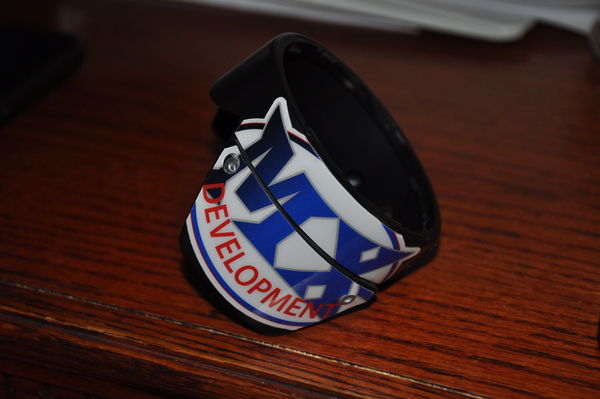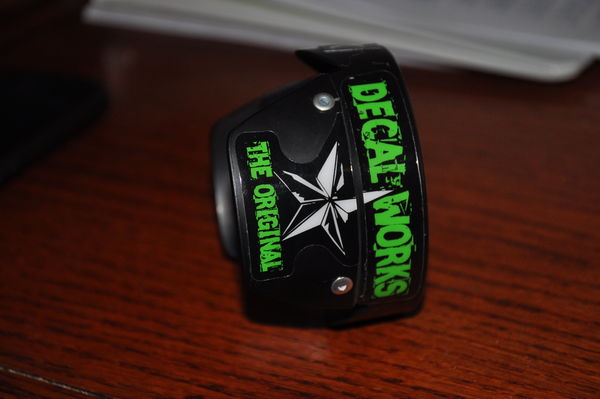what is causing this to happen?
Oct 27, 2014 09:06:50 #
BTW:
Lens flare and ghosting can be used to great artistic and creative effect. It can be used to provide prospective, tension, mood to an image.
In other words, shooting into the sun (or any other strong single point light source)is not always a bad thing. ;)
Lens flare and ghosting can be used to great artistic and creative effect. It can be used to provide prospective, tension, mood to an image.
In other words, shooting into the sun (or any other strong single point light source)is not always a bad thing. ;)
Oct 27, 2014 11:51:51 #
mwsilvers
Loc: Central New Jersey
MotoXR wrote:
I'm shooting witha Nikon D5000 witha 18-140 lens using a UV filter. What is casuing these rings to appear/ ( from the sun i believe) I thought UV fileters were supposed to remove these or am i mistaken?? Would the help of a CPF help? Thank you.
Other than possibly providing a bit of added protection to your front element or finalizing the seal on a weather resistant lens, a UV filter does not provide any added benefit. A clear or haze filter will work just as well. As someone suggested the color of the flare may be due to the filter coating. In that case you would have been better off without the filter. Even though there are many people who believe a UV filter has no negative effect on the results, the green flare would suggest otherwise. I also wonder whether a flat filter over the lens could exacerbate flare. In any case, flare can't always be prevented, but the best way to reduce the possibility of it occurring is with the use of a lens hood.
Oct 27, 2014 14:17:46 #
Yup, flare caused by the filter. And not necessarily yup that you need a hood. A hood can be a nuisance, but it can be very useful. Personally I don't use a hood as a matter of course. I will put on the hood if I think I'll be shooting a lot where I need one, but for an occasional shot that needs a hood I recompose or simply hold up my hand to block the sun.
Oct 27, 2014 14:23:47 #
[quote=MotoXR]I will advise again, and again. If you want advise, click on "sore original". Thank you. David
Oct 27, 2014 15:12:35 #
I find using my hat held in the non shooting hand can block the sun off the lens. Of course then I do risk burning my bald head!
Oct 27, 2014 17:34:50 #
Oct 27, 2014 17:38:01 #
Coker wrote:
Does anyone know how to photshop the lens flair? Can it be done?
About the only successful fix is to clone it out.
Oct 27, 2014 18:16:33 #
mwsilvers
Loc: Central New Jersey
MT Shooter wrote:
About the only successful fix is to clone it out.
And the results could vary widely depending on content.
Oct 27, 2014 18:40:02 #
MotoXR wrote:
The lens hood that i have that came with the lens is short maybe not helping much at all I will see if i can use a longer one without hampering/blocking the opening of the lens.
Another thought, Moto, about this. Years and years ago I kept a collapsible rubber hood on my lenses, which worked well because I had primes and only a 3x zoom (70-210). Today, collapsibles are still made, and some of the better ones collapse in two stages, allowing them to work so-so with modern, broader-range zooms without cropping (or, in your words, blocking the opening of the lens). I suspect you may have an older zoom, or at least an older hood. Newer zooms come with a flower petal hood that has shorter "petals" on the left & right to prevent cropping, and longer petals on top & bottom (this, of course, due to the rectangular shape of the sensor.
I know this is difficult while shooting action, but you can angle your camera differently to move or eliminate the flare. With a longer lens it takes very little movement. One of my B+W polarizers surprisingly flares quite a bit, so I try to watch it and position it where I like it if I don't or can't eliminate it.
Oct 28, 2014 02:29:59 #
wdross
Loc: Castle Rock, Colorado
MotoXR wrote:
I'm shooting witha Nikon D5000 witha 18-140 lens using a UV filter. What is casuing these rings to appear/ ( from the sun i believe) I thought UV fileters were supposed to remove these or am i mistaken?? Would the help of a CPF help? Thank you.
The only true way to prevent lens flare is to prevent direct sunlight from shining on the front element whether it is the filter or first lens element. The idea of an umbrella or a made for photography sunshade is the best suggestion. You do have to be careful to keep the shade out of the picture which can sometimes be difficult when shooting close to directly into the sun. A longer lens shade is the next best suggestion. It may not allow you to shoot as close to the sun as a shade, but it does not have to be positioned like a shade has to. There is no filter that will prevent flare. But the better coated ones like Hoya, B+M, Heliopan, etc. will help to keep it as minimal as possible.
Oct 28, 2014 13:30:36 #
Are these images cropped? What lens are you using? You mentioned a "short" lens hood, which makes me think "wide angle lens." Are you shooting wide angle and then cropping?
Oct 28, 2014 17:52:11 #
dsmeltx No these images have not been cropped or altered. I'm using the Nikon 18-140 lens and the lens hood is short compared to the Nikon 70-300 lens hood i have. That lens hood does not work for the 18-70 range as it blocks or comes into view of the photos. Thanks The lens hood is aprox 1'' long
Oct 31, 2014 13:51:48 #
MotoXR wrote:
I'm shooting witha Nikon D5000 witha 18-140 lens using a UV filter. What is casuing these rings to appear/ ( from the sun i believe) I thought UV fileters were supposed to remove these or am i mistaken?? Would the help of a CPF help? Thank you.
Sunspots, commonly known as lens flare. Direct sunlight goes into your lens where there are numerous glass elements and bounces around in there. One reflection creates one big ugly spot like yours or several reflections create a string of spots. Sometimes they use this as a special effect in movies where they're implying intense sunlight and heat in the desert. They'll shoot into the sun intentionally t create a string of sunspots.
Lens elements are typically coated internally to avoid or reduce this but it can't completely eliminate it. I'd even say the green tint of the spot on your photo may be the color of your coatings. Mine on my Panasonic G lens seem to be pinkish-purple. If you're not using a wide angle lens, try a lens hood, which should have come with your camera/lens package. Also try standing in the shade of a tree or anything else you can find while shooting to keep the direct sun off of you and your camera's lens. At the very least find an angle to shoot from which doesn't have the sun within 45 degrees of the front of your front lens element.
A UV filter's only function is to remove ultraviolet that sometimes creates a blue-ish tint to your whole photo and harms the contrast but it doesn't affect lens flare at all. Many on here will tell you an UV filter does nothing at all but I disagree. It's subtle but I've experienced it back in the film days especially in places like the Smoky Mountains where UV partially provides the "smoky" appearance of the scenery. Fall color shots of mountains across the valley from me always came out slightly better with a UV filter if I didn't want to use, or have, a polarizing filter. Today I keep a UV filter on my lenses to protect them. It saved a lens that was dropped about 2.5 feet to a ceramic tile floor so I'll keep doing it despite nay-sayers.
Oct 31, 2014 19:26:16 #
marcomarks Thank you for your input and help with the uv lens filter. Very good info to know. I will try to post a picture of my modified lens hood. I took another lens hood and cut off the flower pedals and mounted them to my existing short hood. I secured them with pop pivits and colored them black, They now do not interfer with the the lens range as did my lens hood from my 70-300. and gives me nearly double the lenght to help shield the lens.


Nov 1, 2014 12:55:43 #
It should be noted the UV light is a problem with FILM... NOT with modern digital sensors, which either are NOT sensitive to UV, or have processors that eliminate the effect on the final image.
UV filters should NEVER be used with digital cameras and the first post in THIS thread is the reason why.
UV filters should NEVER be used with digital cameras and the first post in THIS thread is the reason why.
If you want to reply, then register here. Registration is free and your account is created instantly, so you can post right away.







